Sports
The 2024 US Open Tennis: Champions, Upsets, and Historic Moments

Introduction
The US Open 2024 proved to be one of the most thrilling and unpredictable tennis tournaments in recent history. From breathtaking rallies and shocking upsets to the rise of new champions, the event captured the imagination of tennis fans worldwide. Played at the USTA Billie Jean King National Tennis Center in New York City between August 26 and September 8, 2024, the tournament closed the Grand Slam season with drama, excitement, and history-making performances.
With $75 million in total prize money, the stakes were higher than ever, and the players delivered performances worthy of the sport’s grandest stage. This blog takes you deep into the highlights, winners, upsets, financials, and key storylines of the 2024 US Open Tennis Championships.
Men’s Singles: Jannik Sinner Claims His Crown
The men’s singles final was a battle of power, precision, and nerves, as Italy’s Jannik Sinner defeated America’s Taylor Fritz in straight sets, 6–3, 6–4, 7–5.
Why This Win Matters
- It was Sinner’s second Grand Slam title, confirming his place among tennis’s elite.
- He became the first Italian man to lift the US Open trophy.
- Sinner showed incredible composure, especially against an American crowd largely rooting for Fritz.
The Road to the Final
- Quarterfinals: Sinner defeated Carlos Alcaraz in a blockbuster match that many dubbed the “unofficial final.”
- Semifinals: He handled Daniil Medvedev’s relentless baseline game with maturity, proving his versatility.
Taylor Fritz’s Breakthrough
For Taylor Fritz, reaching the final was historic. He became the first American man since Andy Roddick in 2006 to play in a US Open final. Although he fell short, Fritz proved he belongs among the top-tier players. His aggressive serving and fearless hitting throughout the tournament made him a fan favorite.

Women’s Singles: Aryna Sabalenka Shines Bright
In the women’s singles, Aryna Sabalenka of Belarus defeated Jessica Pegula of the United States in straight sets, 7–5, 7–5.
Why This Title Is Special
- It was Sabalenka’s first US Open singles title.
- She now holds three Grand Slam titles overall, further solidifying her dominance.
- Sabalenka became one of the few women in history to win both the Australian Open and US Open in the same year.
The Final Showdown
Jessica Pegula, playing in her first Grand Slam final, pushed Sabalenka in both sets. However, Sabalenka’s raw power and ability to raise her game in crucial moments made the difference. Her clutch serving under pressure sealed her victory in straight sets.
Major Upsets and Shocking Exits
The 2024 US Open was defined not just by the winners but also by the stunning early exits of big names.
Novak Djokovic’s Early Exit
The biggest shock came when Novak Djokovic, the defending champion, lost in the third round to Alexei Popyrin. Djokovic struggled with rhythm, while Popyrin played fearless tennis, unleashing huge forehands and serving big. This defeat marked one of Djokovic’s earliest exits in a Grand Slam in years.
Coco Gauff’s Disappointment
Defending women’s champion Coco Gauff was ousted in the fourth round by fellow American Emma Navarro. Gauff, who won the 2023 US Open, couldn’t replicate her magic as Navarro played with aggression and consistency, stunning both the crowd and commentators.
Other Notable Surprises
- Iga Świątek, world No. 1, was defeated in the quarterfinals by Jessica Pegula in a thrilling match.
- Rising star Holger Rune lost early despite being tipped as a dark horse.
- Veterans like Stan Wawrinka and Andy Murray bowed out in the early rounds, possibly marking the twilight of their US Open journeys.
Prize Money: Record-Breaking Numbers
The 2024 US Open offered a record $75 million in prize money, the largest purse in the history of tennis.
- Men’s Singles Champion (Jannik Sinner): $3.6 million
- Women’s Singles Champion (Aryna Sabalenka): $3.6 million
- Finalists (Fritz & Pegula): $1.8 million each
- First-Round Losers: $100,000
This prize pool highlighted the US Open’s commitment to financial growth and equal pay for men and women.
Memorable Matches and Highlights
Sinner vs. Alcaraz: The Clash of the Future
The quarterfinal between Jannik Sinner and Carlos Alcaraz was widely regarded as the match of the tournament. Featuring breathtaking rallies, momentum shifts, and youthful energy, the battle lasted over four hours, with Sinner finally prevailing.

Pegula vs. Świątek: Breaking the Barrier
Jessica Pegula’s victory over Iga Świątek in the quarterfinals was a defining moment in her career. Pegula, often called the “hardest worker” on the tour, finally broke through to her first Grand Slam final by beating the world No. 1 in straight sets.
Emma Navarro’s Rise
Emma Navarro’s victory over Coco Gauff was not just an upset it was a statement. Navarro announced herself as a future contender, blending consistency with fearless shot-making.
The Changing of the Guard in Men’s Tennis
The 2024 US Open was historic because it confirmed the end of the Big Three era at Flushing Meadows. For the first time in years:
- Federer has retired.
- Nadal didn’t play due to injury.
- Djokovic exited before the second week.
This left the spotlight to the next generation: Sinner, Alcaraz, Fritz, Medvedev, and others. Tennis fans are witnessing a new golden age, with fresh rivalries emerging.
The American Dream: Fritz and Pegula
While neither American finalist lifted the trophy, their runs ignited excitement in US tennis:
- Taylor Fritz gave American men’s tennis its biggest moment in nearly two decades. His powerful game and emotional connection with the home crowd made him the story of the men’s draw.
- Jessica Pegula finally broke past the quarterfinal barrier. At 30, her journey is a testament to perseverance, proving that hard work pays off even later in a career.
Their success signals that American tennis may be heading for a resurgence.
Off-Court Moments and Atmosphere
The US Open is as much about the vibe as the tennis. Celebrities filled the stands: from Hollywood actors and singers to NBA and NFL stars. The buzzing energy of Arthur Ashe Stadium was unmatched, especially during night sessions.

The tournament also embraced technology, with advanced AI-driven line calls, faster replay systems, and immersive fan experiences through augmented reality.
Food stalls, fashion statements, and live music made the event a cultural festival as much as a sports competition.
What This Means for the Future of Tennis
For Jannik Sinner
His US Open victory cements him as a Grand Slam threat on all surfaces. With his cool temperament and all-court game, Sinner could dominate the sport in the coming years.
For Aryna Sabalenka
Her victory shows that she is no longer just a hard-hitter but also a tactical, mentally tough player. She is now a serious contender for every Slam she enters.
For American Tennis
The strong runs by Fritz, Pegula, and Navarro prove that the US has a new generation capable of competing with the world’s best.
For the Big Picture
The 2024 US Open highlighted the global nature of tennis. Champions came from Italy and Belarus, finalists from the United States, and stars from Spain, Poland, and Australia made headlines. Tennis has truly become a worldwide sport with no single nation dominating.
Conclusion
The 2024 US Open Tennis Championships will be remembered as a tournament of change, drama, and inspiration. With Jannik Sinner and Aryna Sabalenka lifting the trophies, new chapters in tennis history were written. The shocking exits of legends like Djokovic and Gauff reminded fans that the sport is constantly evolving, while the breakthroughs of Fritz, Pegula, and Navarro gave hope for the future.
From historic wins to unforgettable matches, the 2024 US Open showed why it remains one of the most exciting events in world sports. The torch has officially been passed to a new generation, and tennis fans worldwide can’t wait to see what comes next.
Sports
Skateboarding in the Olympics: A Complete Guide
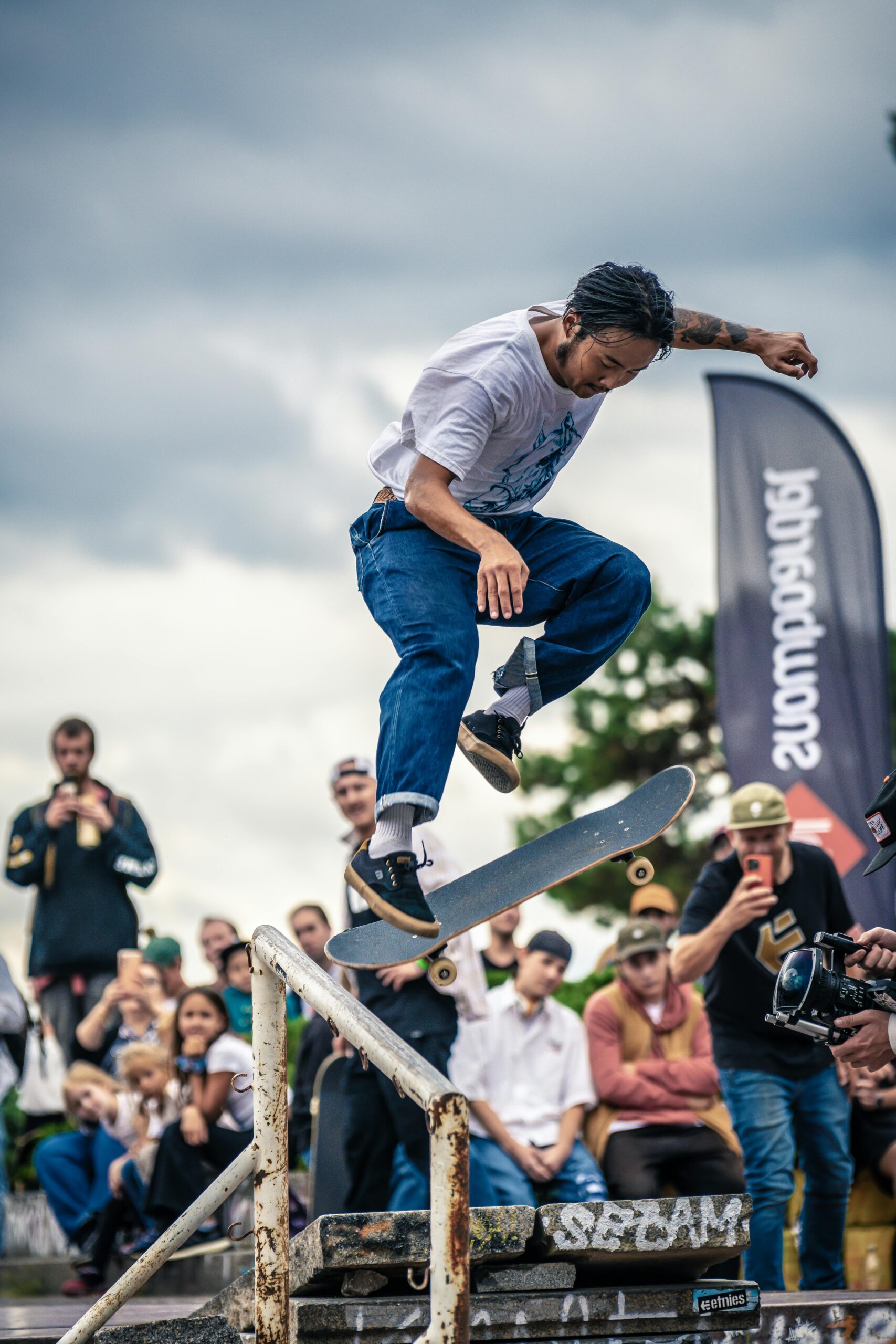
Introduction
Skateboarding, once considered an underground street culture, has risen to the world’s biggest stage the Olympic Games. Its inclusion represents not only recognition of the sport’s athletic complexity but also a celebration of creativity, individuality, and youth culture. For skateboarders and fans alike, seeing athletes perform tricks on rails, ramps, and bowls under the Olympic spotlight is nothing short of historic. This article explores the history, events, rules, and future of skateboarding in the Olympics, along with key athletes who have left their mark.
The History of Skateboarding as a Sport
Skateboarding was born in the 1950s in California when surfers sought a way to practice on land. Early boards were made from wooden planks with roller-skate wheels, and the sport quickly spread among young people. By the 1970s, skateboarding competitions and skateparks emerged, shaping the sport into a recognized athletic pursuit.
Over the decades, skateboarding evolved from a countercultural movement into a global phenomenon. X Games in the 1990s further popularized it, showcasing daring tricks and inspiring new generations of skaters. This growth laid the foundation for skateboarding to earn its place in the Olympic Games.
Skateboarding’s Journey to the Olympic Games
The International Olympic Committee (IOC) first considered skateboarding for the Tokyo 2020 Olympics as part of a plan to appeal to younger audiences. It was officially approved in 2016, and skateboarding made its Olympic debut in Tokyo 2020 (held in 2021 due to the pandemic).
This milestone was significant because it marked the transition of skateboarding from streets and skateparks into a regulated, judged, and globally recognized sport. Its Olympic debut was widely celebrated by skaters and fans, though some purists worried about the commercialization of skateboarding’s free-spirited culture.
Olympic Skateboarding Events Explained
Skateboarding features two main disciplines in the Olympic Games: Street and Park.
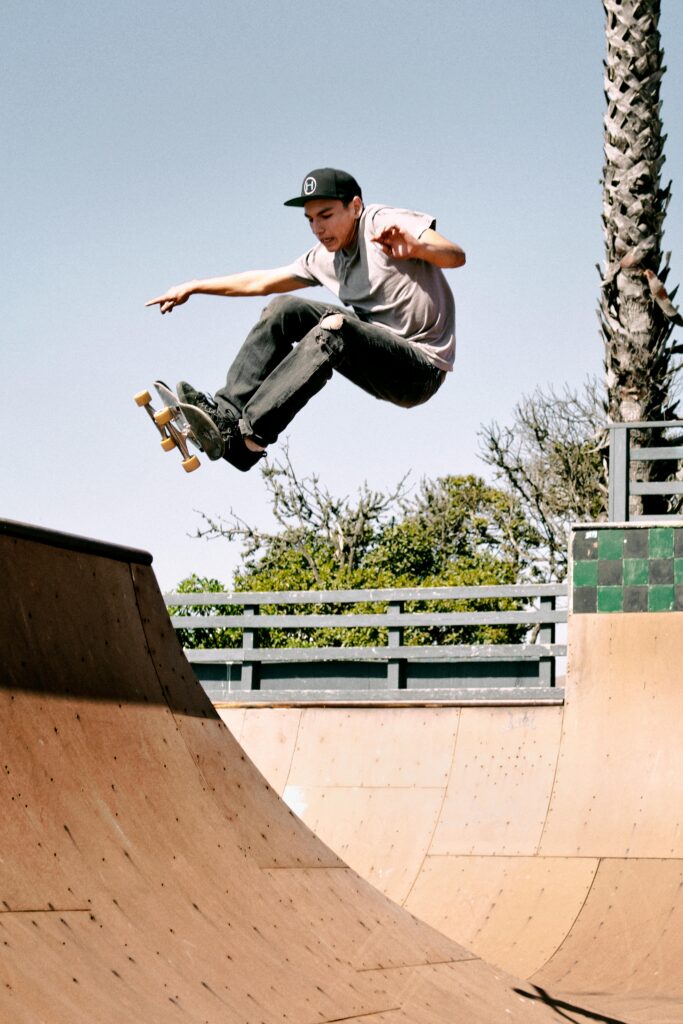
1. Street Skateboarding
- Skaters perform tricks on a course designed to mimic a real street environment.
- Obstacles include rails, stairs, benches, and ledges.
- Judges score based on difficulty, execution, originality, and style.
- Each athlete performs runs and individual tricks to accumulate points.
2. Park Skateboarding
- Skaters ride in a bowl-shaped course with steep sides, ramps, and curves.
- Focus is on flow, speed, height, and creativity of tricks.
- Athletes string together a variety of tricks in a continuous run.
- Judges consider amplitude (height), difficulty, execution, and overall style.
Both events require not only technical skill but also artistry and confidence, making skateboarding one of the most visually exciting Olympic sports.
The Scoring and Judging System
Skateboarding at the Olympics is scored by a panel of judges who evaluate each performance based on:
- Difficulty: Complexity of tricks attempted.
- Execution: Clean landings, balance, and control.
- Use of Course: Creativity in using obstacles or ramps.
- Consistency: Ability to perform multiple tricks successfully.
- Style: Flow, originality, and personal flair.
Scores are averaged, and the highest totals determine medal winners. Unlike traditional sports with fixed outcomes, skateboarding’s creative element makes every competition unique.
Notable Olympic Skateboarding Athletes
Tokyo 2020 Highlights
- Yuto Horigome (Japan): Won gold in men’s street, becoming the first-ever Olympic skateboarding champion.
- Momiji Nishiya (Japan): Just 13 years old when she won gold in women’s street, inspiring young skaters worldwide.
- Keegan Palmer (Australia): Took gold in men’s park with a near-perfect performance.
- Sakura Yosozumi (Japan): Won women’s park, showing the dominance of Japanese skaters in the sport.
Paris 2024 and Beyond
With skateboarding confirmed for Paris 2024 and Los Angeles 2028, new stars are expected to emerge. Countries such as Brazil, the U.S., and Japan continue to produce top talent, making competitions intense and thrilling.
The Cultural Impact of Olympic Skateboarding
The inclusion of skateboarding in the Olympics has had a profound cultural effect:
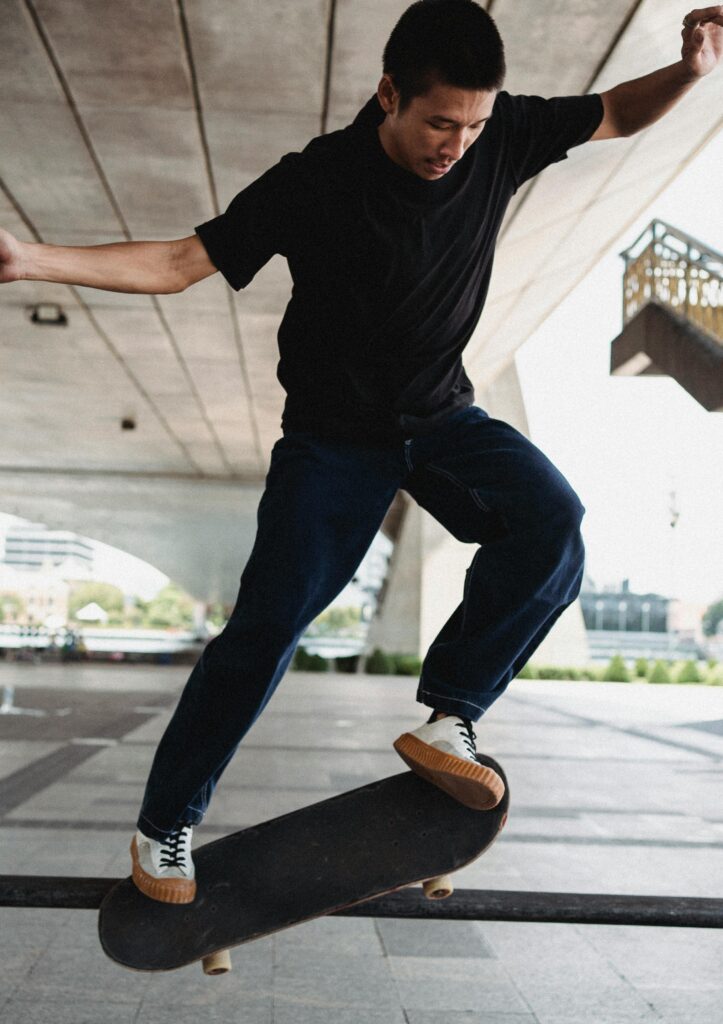
- Youth Inspiration: Young athletes now see skateboarding as a viable career path.
- Global Popularity: The sport is growing rapidly in countries that previously lacked skateboarding infrastructure.
- Breaking Stereotypes: Once seen as rebellious, skateboarding is now respected as a legitimate athletic pursuit.
- Crossover with Fashion & Music: Skateboarding continues to influence streetwear, hip-hop, and popular culture, now with Olympic credibility.
Challenges and Criticisms
Despite its success, Olympic skateboarding faces challenges:
- Loss of Authenticity: Some skaters fear the sport is becoming too structured, losing its creative essence.
- Judging Subjectivity: Since style and creativity are factors, scores can sometimes feel inconsistent.
- Commercialization: Sponsorships and media attention may shift focus from grassroots skateboarding to elite competitions.
Still, many believe the Olympics offer opportunities for skateboarding to grow globally while maintaining its spirit.
The Future of Skateboarding in the Olympics
With upcoming games in Paris (2024) and Los Angeles (2028), skateboarding’s Olympic presence is set to expand. LA 2028 will be especially symbolic, as California is the birthplace of skateboarding. Expect even bigger stages, more diverse athletes, and increased media attention.
The sport’s long-term Olympic success will depend on balancing competition with creativity, ensuring that skateboarding’s unique culture remains intact while celebrating athletic excellence.
FAQs About Olympic Skateboarding
Q1: When did skateboarding first appear in the Olympics?
Skateboarding debuted at the Tokyo 2020 Olympics, held in 2021.
Q2: What events are included in Olympic skateboarding?
There are two events: Street and Park.
Q3: How old do you have to be to compete in Olympic skateboarding?
Athletes as young as 12–13 have competed, as seen with Momiji Nishiya’s gold medal at 13 years old.
Q4: Which countries dominate Olympic skateboarding?
Japan, the United States, and Brazil are currently the strongest nations in the sport.
Q5: Will skateboarding remain in future Olympics?
Yes. It is included in Paris 2024 and Los Angeles 2028, with strong chances of staying permanent.
Conclusion
Skateboarding’s entry into the Olympic Games marked a historic turning point for the sport. From its humble beginnings on California streets to dazzling performances on the world stage, skateboarding has proven itself as a blend of athleticism, creativity, and cultural influence. The Olympic platform not only validates the sport’s legitimacy but also inspires a new generation of riders worldwide. As we look toward Paris 2024 and Los Angeles 2028, one thing is certainskateboarding is here to stay in the Olympics.
Entertainment
Crazy Games Online: The Ultimate Guide to Fun and Free Browser Gaming
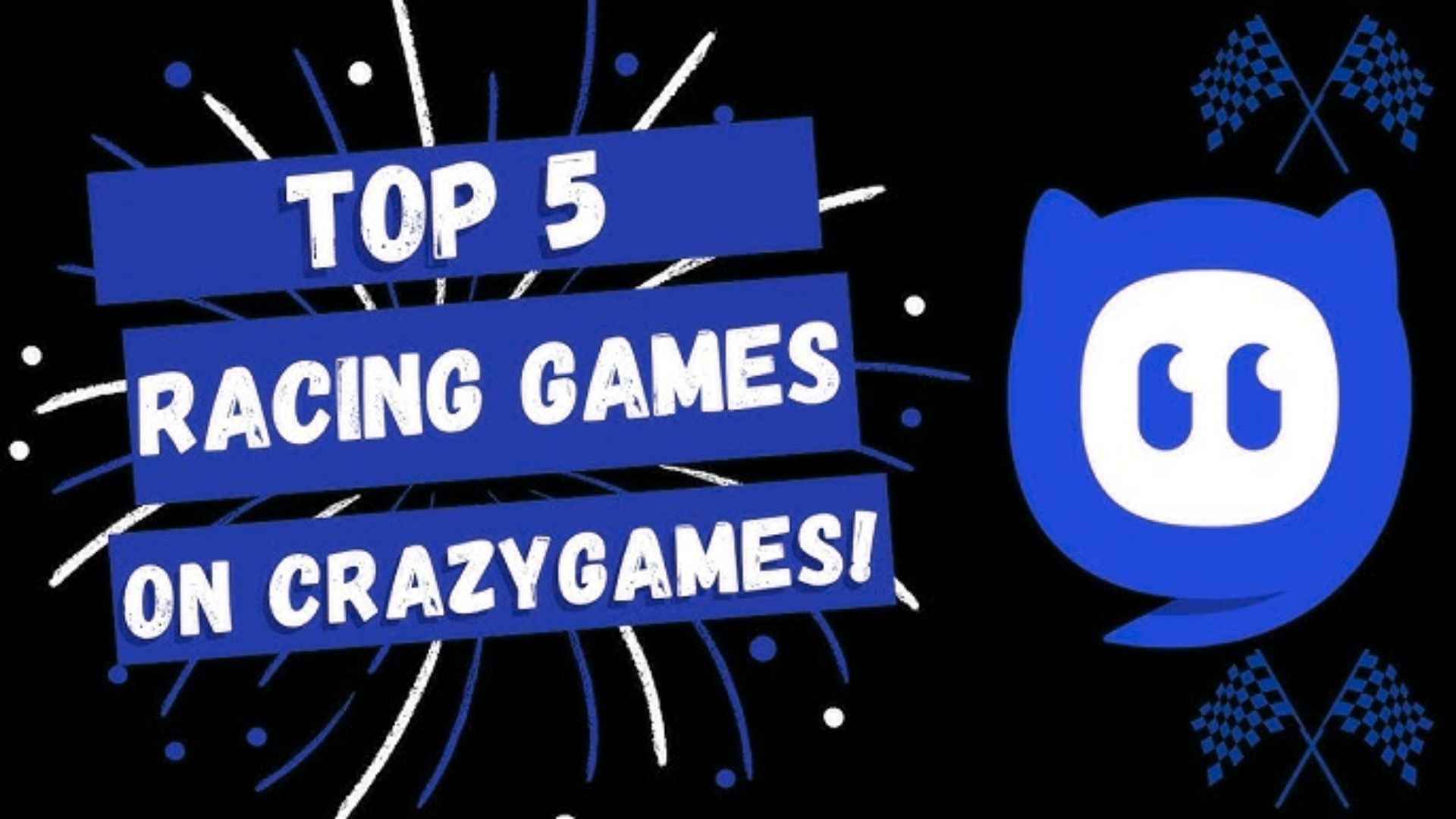
In the past, gaming was often limited to consoles, PCs, or mobile apps. But in today’s digital age, online browser-based games have exploded in popularity. Among the most well-known platforms is Crazy Games, a free-to-play online gaming hub offering thousands of titles across every imaginable category. Whether you’re a casual gamer looking to pass time, a student sneaking in a quick break, or a dedicated player exploring new genres, Crazy Games has something for everyone.
This blog takes a deep dive into Crazy Games Online what it is, why it’s so popular, its best features, top games to try, and tips to maximize your fun.
What is Crazy Games Online?
Crazy Games is a free browser-based gaming platform launched in 2014. It provides instant access to thousands of online games no downloads, installations, or sign-ups required. Players can dive into everything from action and adventure to puzzles, sports, simulation, and multiplayer battles with just a click.
Its biggest advantage? Accessibility. Since all games run directly in the browser, you can play on any device PC, laptop, tablet, or even mobile without worrying about storage space or compatibility issues.
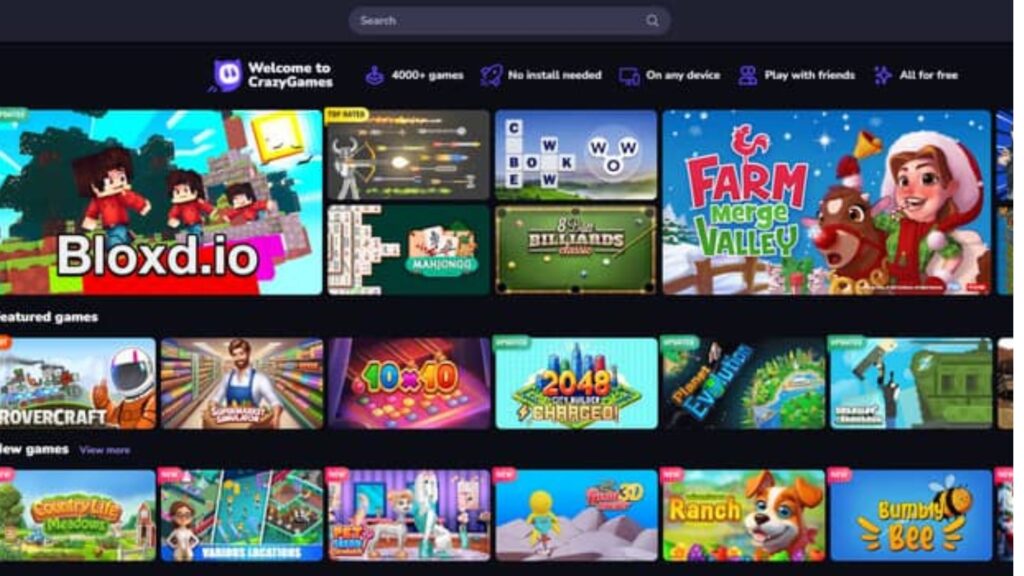
Why is Crazy Games So Popular?
Several factors have made Crazy Games a go-to destination for online gamers:
- Free to Play : No hidden costs or subscriptions.
- Huge Variety : Thousands of games across different genres.
- No Downloads Needed : Instant play in your web browser.
- Multiplayer Options : Connect with friends or play against strangers worldwide.
- Regular Updates : New games are added frequently, keeping the library fresh.
- Cross-Device Play : Works on PC, Mac, Chromebook, and mobile.
It’s basically the Netflix of browser gaming easy, diverse, and endlessly entertaining.
Categories of Games on Crazy Games
Crazy Games caters to every gaming style. Some of the most popular categories include:
- Action & Adventure : Fast-paced battles, exploration, and survival.
- Puzzle & Strategy : Brain teasers, logic games, and problem-solving challenges.
- Sports & Racing : Football, basketball, car racing, and extreme sports.
- Simulation : Farming, city-building, or running businesses.
- Shooter Games : From first-person shooters (FPS) to battle royale.
- Multiplayer Games : Play live with friends or compete against online players.

- Arcade Classics : Retro-style fun inspired by classic 2D games.
Top Games to Try on Crazy Games
If you’re new to the platform, here are some fan favorites to get you started:
- Shell Shockers : A hilarious multiplayer FPS where you play as an egg armed with guns.
- Paper.io 2 : A fun territory-capturing game where you outsmart opponents to dominate the map.
- Moto X3M : A thrilling motorcycle stunt game with challenging obstacle courses.
- Krunker.io : A popular pixelated FPS with fast-paced action.
- Basketball Stars : A competitive 1v1 basketball game loved by sports fans.
- Idle Mining Empire : A clicker simulation where you build your mining business empire.
- Car Drawing Game : Create your own car designs and test them on the track.
Tips for Enjoying Crazy Games Online
- Use Full Screen Mode : Enhances the gaming experience.
- Check Game Ratings : Popular games usually have higher ratings and reviews.
- Try Multiplayer Mode : Compete with or against friends for more fun.

- Experiment with Genres : Don’t stick to one style; Crazy Games is about variety.
- Bookmark Favorites : Keep track of games you love for quick access.
The Educational Side of Crazy Games
Crazy Games isn’t just about entertainment. Many of its games encourage:
- Problem-Solving Skills (through puzzles and strategy).
- Hand-Eye Coordination (through racing and shooting games).
- Creativity (through design, simulation, and building games).
- Collaboration (through multiplayer challenges).
It’s no wonder students and casual learners often use it as a fun break that still sharpens the mind.
The Future of Browser Gaming
With the rise of cloud gaming and instant-access platforms, browser-based gaming like Crazy Games is only getting bigger. More developers are moving away from heavy downloads and toward accessible, free-to-play experiences. This means we can expect even better graphics, smoother gameplay, and more innovative titles on Crazy Games in the future.
Final Thoughts
Crazy Games Online is more than just a gaming website it’s a worldwide community of players enjoying free, accessible, and endlessly diverse entertainment. Whether you want a five-minute brain teaser, a competitive online match, or an immersive simulation, Crazy Games delivers it instantly.
So, the next time you’re bored or need a quick escape, just fire up your browser and dive into the world of Crazy Games Online where fun is only one click away.
Sports
HIIT Workouts: The Ultimate Guide to High-Intensity Interval Training

Introduction
When it comes to fitness, few workout styles have gained as much popularity as HIIT (High-Intensity Interval Training). Unlike traditional steady-state cardio, HIIT combines short bursts of intense exercise with periods of rest or low-intensity movement. This training method delivers maximum results in minimal time, making it a favorite among busy professionals, athletes, and fitness enthusiasts alike.
Whether your goal is weight loss, muscle toning, or boosting endurance, HIIT offers a science-backed way to achieve results faster. This blog will explore what HIIT is, its benefits, how to do it correctly, and different workout examples you can try today.
What is HIIT?
HIIT (High-Intensity Interval Training) is a workout technique where you perform short, explosive exercises at maximum effort, followed by brief recovery periods. For example:
- 30 seconds sprinting → 30 seconds walking → Repeat.
The intensity pushes your heart rate close to its maximum, while the rest allows partial recovery before the next round. HIIT can be applied to cardio, strength training, bodyweight exercises, or even equipment-based workouts.
Benefits of HIIT
1. Burns More Calories in Less Time
HIIT workouts are known for their afterburn effect (EPOC – Excess Post-Exercise Oxygen Consumption). This means your body continues burning calories hours after finishing your session.
2. Boosts Metabolism
By challenging your cardiovascular system, HIIT increases metabolic rate and fat oxidation, supporting long-term weight loss.
3. Improves Cardiovascular Health
HIIT strengthens your heart and lungs by improving VO₂ max (maximum oxygen uptake), which enhances endurance and overall fitness.
4. Builds Muscle and Strength
Bodyweight and resistance-based HIIT workouts help develop lean muscle while burning fat.

5. Saves Time
Most HIIT workouts last only 15–30 minutes, making them ideal for people with busy schedules.
6. No Equipment Needed
Many HIIT routines rely on bodyweight moves (like burpees, squats, and push-ups), so you can train anytime, anywhere.
7. Improves Insulin Sensitivity
Studies show HIIT enhances insulin sensitivity, making it an effective tool for managing blood sugar levels.
How HIIT Works in the Body
HIIT alternates between anaerobic (intense, oxygen-limited) and aerobic (oxygen-based) systems. During the high-intensity phase, your body primarily uses stored glycogen. The recovery phase allows partial replenishment, but since you never fully recover, your body adapts by improving endurance, strength, and fat utilization.
Popular HIIT Exercises
1. Cardio-Based HIIT
- Sprint intervals
- Jump rope
- Cycling
- Rowing
2. Bodyweight HIIT
- Burpees
- Jump squats
- Mountain climbers
- Push-up variations
3. Strength HIIT
- Kettlebell swings
- Dumbbell thrusters
- Weighted lunges
- Deadlifts with timed intervals
Sample HIIT Workouts
Beginner (15 minutes)
- Jumping jacks – 30s
- Rest – 30s
- Squats – 30s
- Rest – 30s
- Push-ups – 30s
- Rest – 30s
Repeat 3 rounds.
Intermediate (20 minutes)
- Sprint – 40s
- Walk – 20s
- Mountain climbers – 40s
- Rest – 20s
- Burpees – 40s
- Rest – 20s
Repeat 4 rounds.

Advanced (25 minutes)
- Kettlebell swings – 45s
- Rest – 15s
- Jump squats – 45s
- Rest – 15s
- Push-up to shoulder tap – 45s
- Rest – 15s
- Sprint – 45s
- Rest – 15s
Repeat 5 rounds.
How Often Should You Do HIIT?
- Beginners: 2–3 times per week with rest days in between
- Intermediate/Advanced: 3–4 times per week, alternating with strength or steady-state cardio
Overtraining can cause fatigue or injury, so allow your body enough recovery time.
Common Mistakes to Avoid
- Skipping Warm-Up and Cool-Down – Increases injury risk.
- Overdoing It – HIIT is intense; doing it daily may cause burnout.
- Poor Form – Quality is more important than speed.
- Too Long Sessions – HIIT should be short and effective (15–30 mins).
- Ignoring Recovery – Sleep, hydration, and nutrition are essential for results.
Nutrition Tips for HIIT Success
- Pre-workout: Light carbs (banana, oats) + protein (yogurt, smoothie)
- During workout: Stay hydrated; water is usually enough for short sessions
- Post-workout: Protein + carbs (chicken with rice, protein shake, or eggs with toast) for muscle recovery and glycogen replenishment
HIIT vs. Traditional Cardio
| Feature | HIIT | Steady-State Cardio |
|---|---|---|
| Time Required | 15–30 minutes | 45–60 minutes |
| Calorie Burn | Higher (due to afterburn) | Moderate |
| Muscle Building | Yes (if strength-based) | Minimal |
| Fat Loss Efficiency | Fast and effective | Slower but steady |
| Accessibility | No equipment needed | Often requires machines |
Both have benefits, but HIIT is superior for efficiency and metabolism boosting.
Who Should Avoid HIIT?
HIIT is generally safe, but it may not be suitable for:

- People with heart conditions unless cleared by a doctor
- Individuals recovering from injury
- Beginners without proper guidance
- Pregnant women (unless approved by healthcare provider)
Always consult a fitness professional or doctor before starting intense routines.
Conclusion
HIIT workouts are one of the most effective, time-saving ways to burn fat, build muscle, and boost overall fitness. Whether you’re a beginner or advanced athlete, HIIT can be tailored to your goals and lifestyle. By balancing intensity, proper form, and recovery, you can enjoy maximum results in minimal time.
If you’re ready to transform your fitness journey, start with just two HIIT sessions a week and gradually increase as your body adapts. Remember: consistency beats intensity in the long run.
FAQs About HIIT
Q1: How long should a HIIT workout last?
Most HIIT sessions last between 15–30 minutes for best results.
Q2: Can HIIT help with weight loss?
Yes, HIIT burns calories during and after exercise, making it excellent for fat loss.
Q3: Do I need equipment for HIIT?
Not necessarily. Many HIIT routines are bodyweight-based, but dumbbells or kettlebells can add intensity.
Q4: Is HIIT suitable for beginners?
Yes, but start slow (15 minutes, 2–3 times a week) and focus on form.
Q5: How quickly will I see results with HIIT?
With consistency and proper diet, you may notice results within 4–6 weeks.
-

 Fashion3 months ago
Fashion3 months agoThese ’90s Fashion Trends Are Making a Big Comeback in 2025
-

 Fashion3 months ago
Fashion3 months agoTop Fashion Trends to Follow in August 2025
-

 How-To Tutorials & Troubleshooting3 months ago
How-To Tutorials & Troubleshooting3 months agoHow to Fix Missing Pantone Color Books in Adobe Illustrator 2024-2025 (Free and Easy Method)
-

 Entertainment3 months ago
Entertainment3 months agoTrending Soundtrack: “KPop Demon Hunters”
-

 Entertainment3 months ago
Entertainment3 months agoSquid Game Season 2: Deadlier Games, Deeper Secrets & Darker Drama




